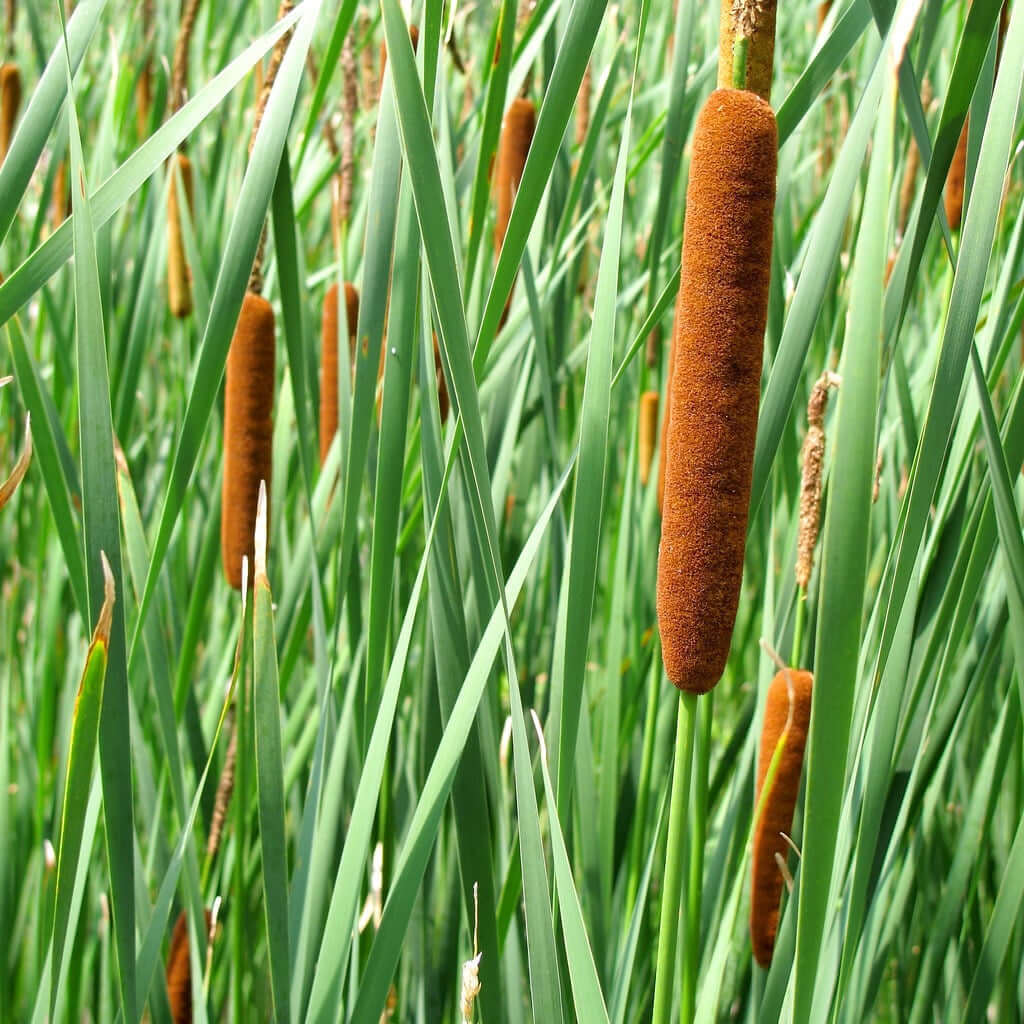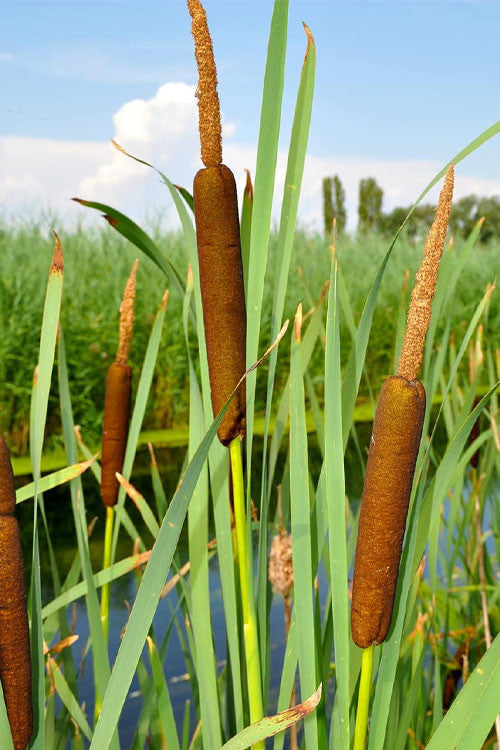Cattail Plant For Sale | Typha
The Cattail Plant is the most iconic wetland grass everyone knows and loves. One quickly recognizes it with its hot-dog-shaped blooms between slender and breezy blades. Miraculously able to stand tall in several feet of water, this grass is truly one-of-a-kind. It is a popular go-to for gardeners looking to populate the wettest areas of a landscape, bringing several benefits other than its unique appearance. This grass provides endless visual interest for your pond or lake and is a crucial player in enhancing environmental stability.
Plant Details - Cattail Plant (Typha)
Family: Typhaceae
Light Requirement: Full Sun – Partial Shade
Water Needs: Very High
Height: 4-10 ft.
Spread: Indefinitely with clumping rhizomes
Growth Rate: Fast
Bloom Time: Late Spring - Summer
Flower Color: Brown
Wildlife Value: Provides food and shelter for wildlife, provides nesting material for birds
The blades of this grass are quite long and have a slightly waxy outer layer that provides extra reinforcement. This powerful spreader thrives in the wettest conditions possible, preferring to live in shallow water or consistently moist mud. This means they are often found naturally in marshes, along muddy banks, or in pond water. It spreads incredibly fast in clumping colonies with an indefinite horizontal spread. The memorable flowers are a solid brown upon maturity and go to seed by early fall.
Landscape Uses and Maintenance - Cattail Plant (Typha)
This powerful grass is a dynamic addition to a wet habitat. Its dense root structure holds onto wet, loose soil and efficiently controls erosion. The plant's clump-forming, densely leafed habit provides a preferred shelter for many aquatic and semi-aquatic animals, who also appreciate its materials for nesting purposes. Once planted, the Cattail Plant requires almost no maintenance, but it may be prudent to cut the plant back regularly to prevent excessive spreading; otherwise, it may quickly take over an entire area.
Noteworthy Characteristics of the Cattail Plant
The Cattail Plant is easily identified by its unique, cylindrical flowers, whose thickness and color resemble a cat's tail, which is the trait that inspired its name. When summer passes, the flowers form into dense seed heads that dry out and burst open, releasing fluffy seeds. If you take a clump of the seeds, you will notice the distinct, soft cotton-like texture.




